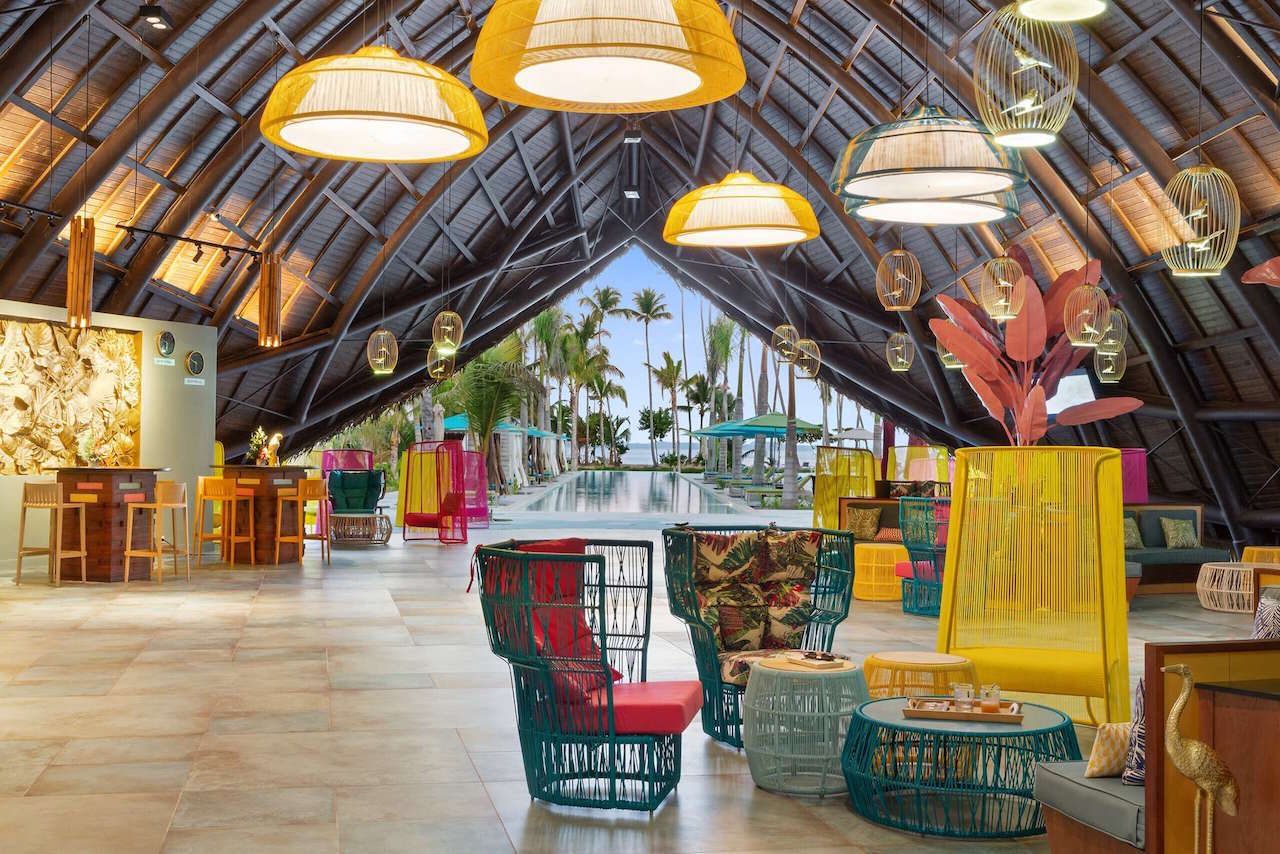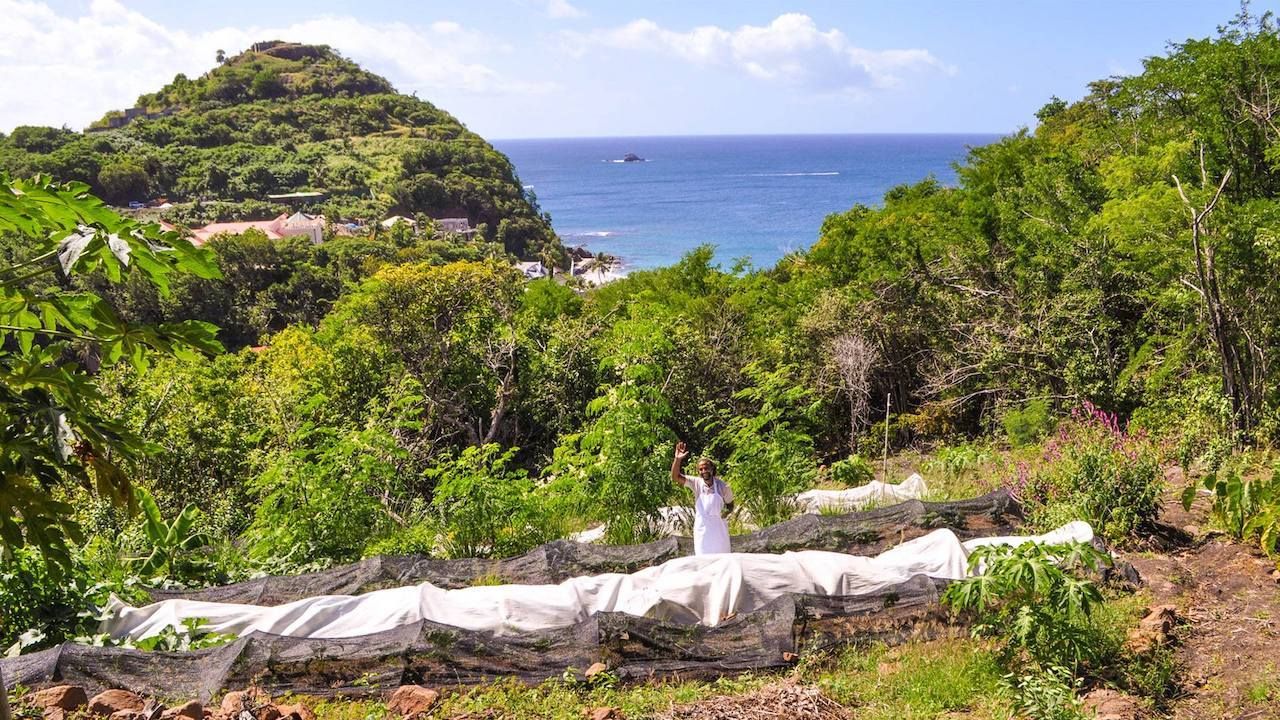In the past decade, the wellness travel trend has had a transformative impact on the tourism industry. According to the travel industry news site Skift, wellness tourism is worth about $639 billion worldwide and continues to grow at twice the rate of the tourism industry overall. Yet the way we defined wellness 10 years ago looked a lot different than it does today. What started with kale juice and counting steps has evolved to encompass everything from astrology-guided drunk yoga to orgasm workshops.


Here’s What Eco-Friendly Wellness Travel Will Look Like in the Future
It makes sense. Travel can feel like a blank slate. An opportunity for education and altering habits. A break from routine that creates the time and space we need to focus solely on being our best selves. And the more we dig into what it means to be well, the more apparent it becomes that we cannot be healthy if our planet is not. In the years to come, if we want our wellness retreats to come with things like clean water, fresh air, and nutrient-rich food, we need to raise our standards for sustainable wellness travel. Asking yourself these questions below before you book future wellness travel will guide you toward eco-friendly experiences that meet a much-needed new standard of sustainability.
How is the resort protecting its local ecosystem?
According to the United Nations’ Global Sustainable Tourism Council (GSTC), destination stewardship is the process by which hotels and resorts help preserve the attributes that make a destination attractive to tourists. This means preserving local plants and wildlife, as well as the cultural heritage of a place. When booking a wellness retreat, find out what the resort is doing to protect the local ecosystem from which it — and you — are benefitting.

Photo: Club Med
For example, Club Med Resorts takes its environmental stewardship seriously, with 80 percent of its properties achieving Green Globe certification. When it opened a new resort and spa on the yet-unspoiled beaches of Miches in the Dominican Republic, Club Med used the opportunity to set an eco-conscious precedent for future developments in the area. It worked with local government agencies to perform an in-depth environmental impact study and enacted a tree-replanting program to save and replant the more than 2,000 trees that needed to be moved for construction. While all-inclusive resorts are not necessarily optimal for the local economy, we are glad to see the effort to save the removed trees.

Photo: Ocean House/Facebook

Photo: Ocean House/Facebook
Farther north in the Canadian archipelago of Haida Gwaii, the floating Ocean House wellness resort is 100 percent Haida-owned with an environmental ethos rooted in its Native American heritage. Every aspect of the Ocean House wellness experience is guided by the Haida concept of yahguudang: respect for all living things and the interdependence that binds us. Its environmental stewardship efforts earned the property Sustainable Tourism Gold Certification in August 2018.

Photo: Andaz Mayakoba Resort Riviera Maya/Facebook
Many destinations invite guests to participate in conservation and environmental stewardship. At Hyatt’s Andaz Mayakoba Resort in Cancun, for instance, guests partake in the resort’s Reef Guardian experience to preserve Mayakoba’s coral reefs. Twice a week, groups kayak out to the reef and assist in planting new, live coral colonies while learning about the endangered coral from Reef Guardian experts. Coral preservation and propagation programs are also offered at other popular wellness resorts including Iberostar’s Punta Cana property, COMO Maalifuushi in the Maldives, and the Six Senses Ninh Van Bay resort in Vietnam.

Photo: Ted Turner Reserves/Facebook
Back on dry land, guests of Vermejo, a Ted Turner reserve set on more than 500,000 acres of New Mexico wilderness, can partake in annual elk and bison hunts to keep game populations at biologist-specified levels that help prevent overgrazing and keep the natural ecosystem in balance. They are working to ensure any meat that doesn’t get taken home finds a home in their kitchens for use by the resort’s expert culinary team. Which brings me to the next question we should be asking…
What food are they serving, and where does it come from?

Photo: Blackberry Mountain/Facebook

Photo: Blackberry Mountain/Facebook
One of the surest signs that a wellness resort is serious about your health is when its menu is full of local, seasonal, and mostly plant-based ingredients. Not only does local food require fewer CO2 emissions for transportation, but it’s also better for you. The closer the food is to its original source when you eat it, the more nutrients it will provide. Local also means better flavor, which is why the best chefs have strong relationships with the farmers and purveyors in their community.

Photo: Blackberry Mountain/Facebook

Photo: Blackberry Mountain/Facebook
The food at Blackberry Mountain wellness retreat is a perfect example. In partnership with its award-winning sister restaurant, Blackberry Farm, the retreat’s restaurants are fiercely committed to cooking up locally sourced ingredients at every meal, and foodie travelers are taking note.

Photo: The BodyHoliday/Facebook
But perhaps the best example of locally sourced food at a wellness retreat is at The BodyHoliday in St. Lucia, which takes farm-to-table a step further by having guests do the farming. Here, groups are led through the on-site regenerative garden by the hotel’s Environment and Ecosystem Leaders, Damian and Ratoya Adjodha. They share nutrition information and cultural context for each ingredient as you harvest, helping guests connect more deeply to the meal they then help create in the nearby kitchen. This experience of cultural exchange is another important benefit to eating local when traveling.
While plant-based is generally the more eco-friendly choice, it’s okay to eat meat occasionally as long as it’s — you guessed it — locally sourced. If you’re in the Caribbean, for example, you can skip the salmon knowing there are plenty of fresh, local seafood options available. At the carbon-neutral Bucuti & Tara Beach Resort, you’ll find a delicious lionfish ceviche on the menu, part of the resort’s efforts to combat the invasive population in its surrounding waters.
Of course, every meal you enjoy on vacation is bound to generate some amount of waste, which is why the last question to ask when booking your next wellness retreat is…
What steps are they taking to minimize waste?
When it comes to what we eat, we must also pay attention to what we throw out. And hotels and resorts are getting creative in order to solve the environmental scourge caused by food waste. At the Clarion Hotel in downtown Oslo, intentionally small plates are used at the breakfast buffet to prevent guests from loading their plates with food they won’t eat. In addition, new technology in food-waste analysis is being used by the Club Med in Punta Cana (and soon, other resorts in its portfolio) to more accurately predict how much of certain foods guests are eating, which can prevent the hotel from over-ordering its next supply. When it comes to mitigating emissions from food waste and sourcing, Zero Foodprint is helping restaurants become carbon neutral via a one percent fee added to patrons’ checks, which is used to help farmers implement practices that store carbon and improve soil health.
Beyond food waste, the use of single-use plastics by hotels and resorts can result in billions of pounds of trash per year. To address the issue, hotel groups like Hyatt, Marriott, Club Med, and Intercontinental Hotel Group have committed to reducing or eliminating single-use plastics from their properties. Instead, you’ll find straws and spoons made from avocado pits, or bulk-size toiletries replacing small, single-use bottles.
While it’s encouraging to see these efforts by major hospitality companies, it would be nice to have a way of recognizing them, right? That’s where Green Building Certification Inc. (GBCI), the same accrediting body responsible for LEED Certification, can help. Its plethora of certifications is helping travelers easily distinguish which properties are making serious efforts to reduce waste. For instance, The Hyatt Regency Maui Resort & Spa is one of the first hospitality companies to pursue GBCI’s TRUE (Total Resource Use and Efficiency) Zero Waste certification. To achieve this, properties must have more than 90 percent waste diversion from landfill, incineration, and the environment. In the last year, the Hyatt Regency Maui nearly doubled its landfill diversion from 38 percent to 75 percent.
Gone are the days that a simple towel rewash program was enough to warrant a sustainable stamp of approval. In order to make an actual dent in climate change, eco-conscious wellness hotels are elevating the status quo for destination management, food sourcing, and waste reduction. Keeping these three questions in mind before you book your future wellness retreat will ensure a much healthier experience for you and the planet.